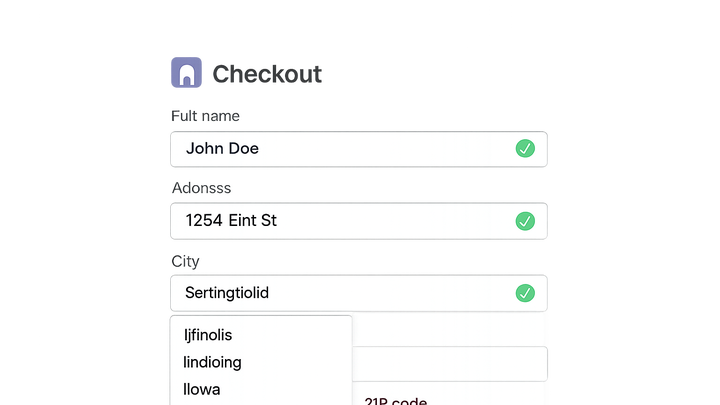Published on 2025-06-29T21:57:47Z
What Is Checkout Address Validation? Examples and Best Practices
Checkout Address Validation is the real-time verification and correction of shipping or billing addresses during the ecommerce checkout process. By integrating specialized APIs or services, online stores can detect typos, suggest autocomplete options, and confirm deliverability. This not only reduces cart abandonment and shipping errors but also enhances user experience and trust. Accurate address data streamlines operations, lowers support costs, and can even benefit SEO by improving local search signals and reducing content duplication. Tools like Prevue.me can audit your address validation implementation, offering CRO, UX, SEO, and accessibility critiques to optimize performance.
Checkout address validation
Real-time verification of checkout addresses to reduce errors, enhance UX, boost conversions, and support SEO efforts.
Understanding Checkout Address Validation
This section defines checkout address validation and explains its core components and workflows.
-
Definition
Checkout Address Validation is the process of verifying the accuracy and completeness of a user’s shipping or billing address during the online checkout flow, ensuring valid formatting and real-world deliverability.
-
Core components
Checkout address validation relies on multiple integrated parts to ensure accuracy.
- Address database apis:
Connections to authoritative data sources verify address existence and format.
- Autocomplete engines:
Automatically suggest address completions based on partial user input.
- Error detection logic:
Rules and algorithms that identify missing or malformed address fields.
- Address database apis:
Why It Matters for CRO, UX, and SEO
Effective address validation influences conversion rates, customer satisfaction, and search visibility.
-
Boost conversion rates
By minimizing input errors and frustration, validated addresses help keep customers engaged and prevent checkout drop-offs.
-
Enhance user experience
Accurate and interactive validation builds trust and reduces friction during checkout.
-
Improve operational efficiency
Streamlined address handling reduces manual verification, shipping exceptions, and overhead for support teams.
-
Support seo
Consistent and accurate address data can improve local search relevance and reduce duplicate content issues.
Best Practices for Implementation
Guidelines to ensure your address validation is both robust and user-friendly.
-
Select the right provider
Evaluate global coverage, accuracy, API response times, pricing, and data freshness.
-
Implement real-time feedback
Provide inline validation messages and suggestions as users type.
- Inline error messages:
Highlight invalid fields with clear, concise error messages.
- Auto-completion dropdowns:
Use dropdown suggestions to let users choose valid addresses quickly.
- Inline error messages:
-
Ensure accessibility
Make validation messages screen-reader-friendly and keyboard-navigable.
-
Use prevue.me for audits
Leverage prevue.me to get actionable CRO, UX, SEO, and accessibility critiques of your address validation implementation.
Measuring Success and Optimization
Key metrics and techniques to evaluate the performance of your address validation setup.
-
Validation success rate
Percentage of addresses successfully validated on the first attempt.
-
Error correction rate
Rate at which users correct invalid addresses after receiving validation feedback.
-
Cart completion rate
Overall checkout completion rate influenced by address validation friction.
-
User completion time
Average time users take to complete the address fields.
